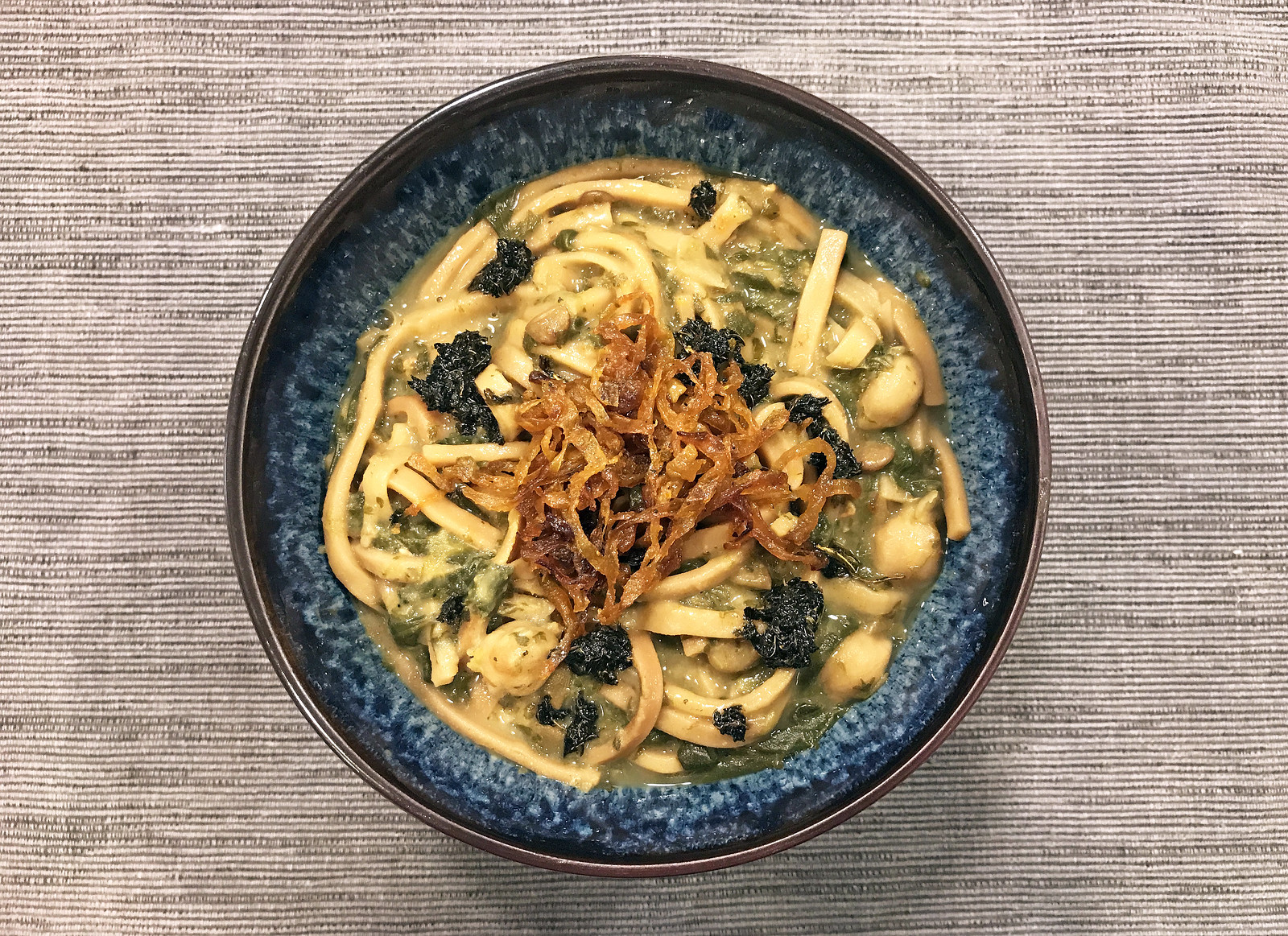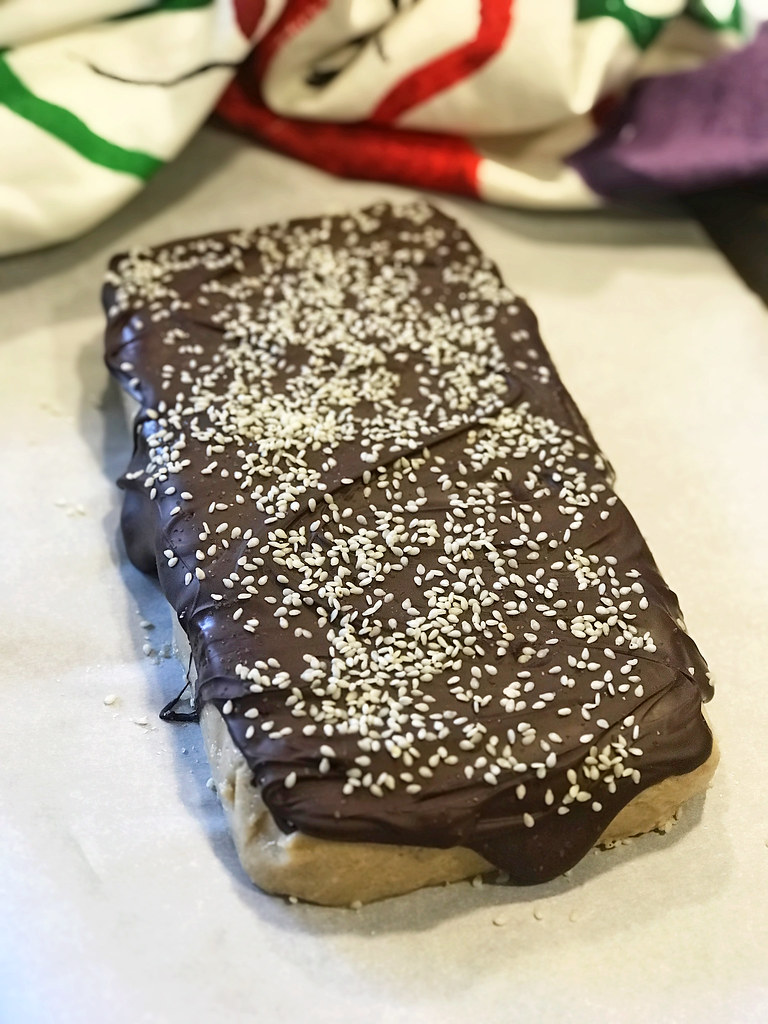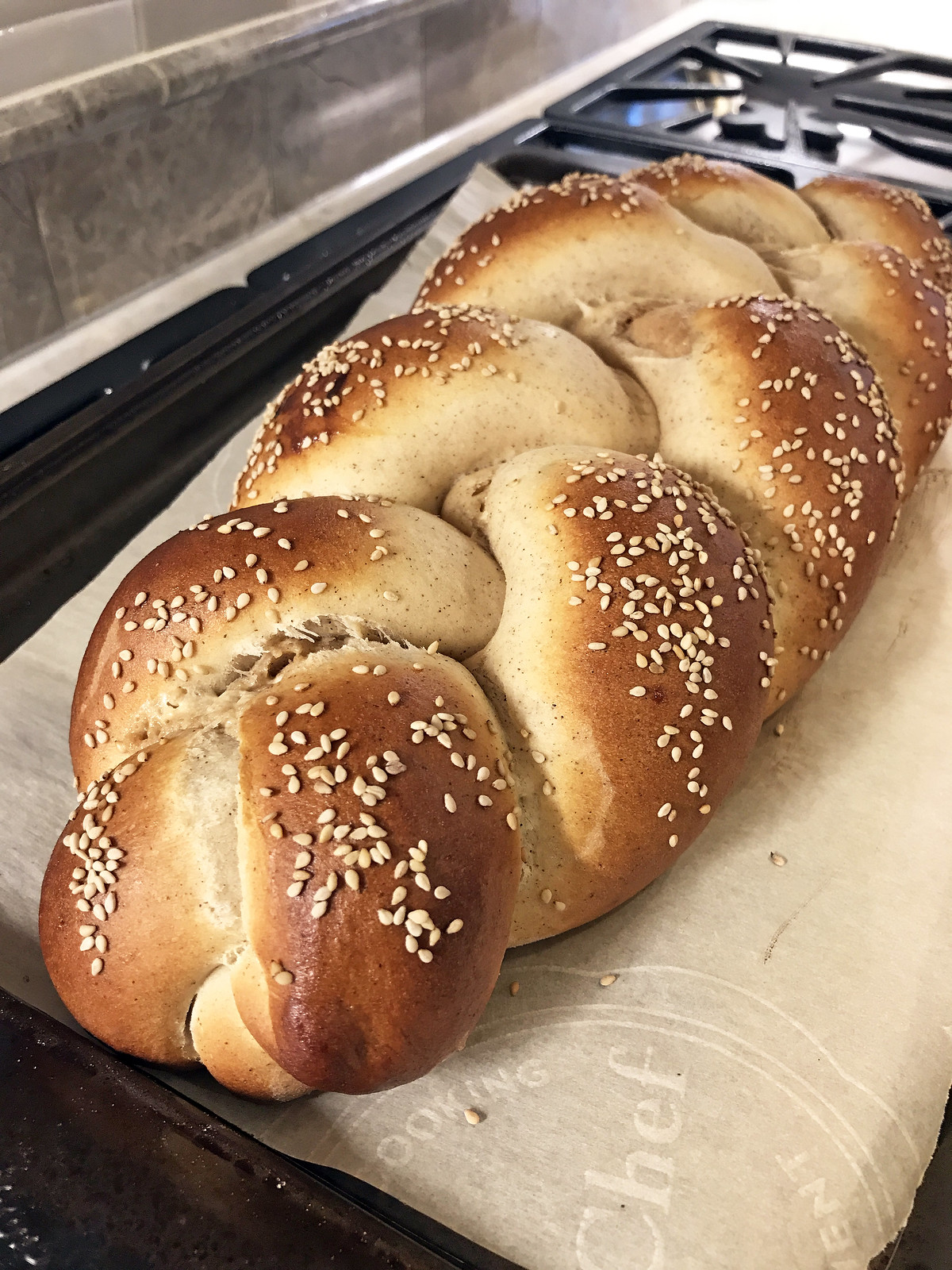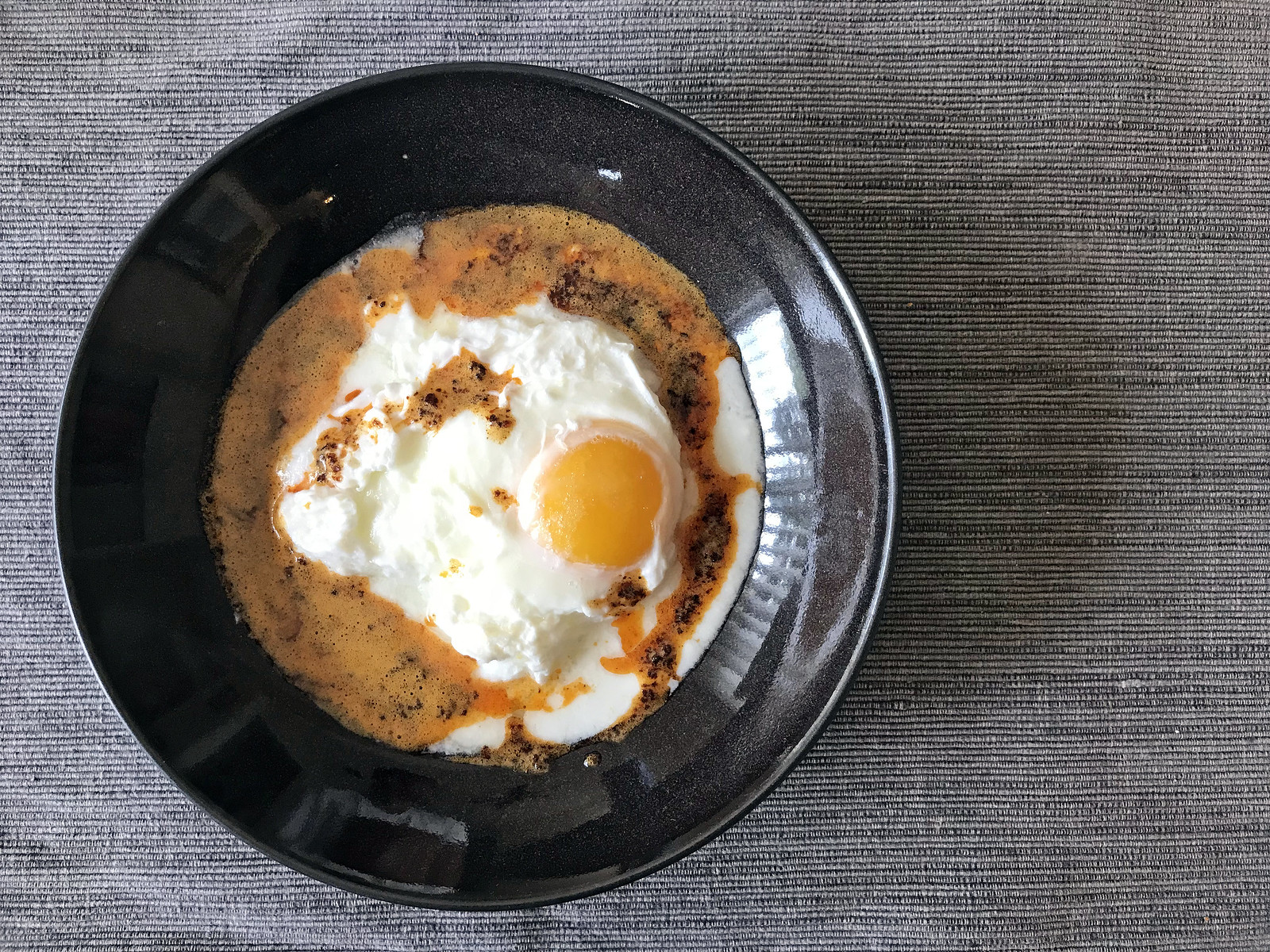Torshi tareh is the dish I never knew existed but always wanted. Hailing from Iran’s Caspian Sea area, it’s a regional speciality much like saag paneer — but with eggs instead of cheese. Chock-full of greens, it’s worth seeking out the namesake tareh in this recipe. Tareh are Persian chives (also called Persian leeks). If you can’t find these, a mix of green onions and garlic chives make a reasonable substitute.

Ingredients:
For the braise:
2 cups spinach, roughly chopped
2 cups parsley, roughly chopped
2 cups cilantro, roughly chopped
2 cups Persian chives (or substitute with green onions and garlic chives), roughly chopped
1/2 cup mint, roughly chopped
1/2 cup basil, roughly chopped
1 clove garlic, peeled
1/4 cup olive oil
1 teaspoon salt
1/2 teaspoon turmeric
1 1/2 cups water
2 tablespoons rice flour dissolved in 1 cup water
For the eggs:
3 teaspoons olive oil
4 cloves garlic, peeled and grated
6 eggs
3/4 teaspoon salt
1/4 teaspoon pepper
1/2 teaspoon turmeric
1/4 teaspoon cinnamon
1/3 cup lime juice
1. To make the braise: Place all of the herbs and garlic in a food processor and pulse until finely chopped.
2. Heat 1/4 cup olive oil in an enameled cast-iron pot. Transfer the herb mixture to the pot and saute over medium heat for a few minutes.
3. Add salt, turmeric, 1 1/2 cups water, and bring to a boil. Reduce heat to medium-low, cover, and cook for 25 minutes. Add the diluted rice flour and give it a stir. Cover, reduce heat to low, and allow to simmer for another 25 minutes, stirring occasionally to make sure the mixture doesn’t stick to the bottom of the pot.
4. Make the eggs: Heat the remaining 3 teaspoons oil in a skillet over low heat until hot. Add the garlic and saute for 30 seconds, until lightly golden.
5. In a large bowl, lightly whisk the eggs and add the salt, pepper, turmeric, and cinnamon until just blended.
6. Just before serving. Add the egg mixture to the garlic in the skillet and saute for a few minutes, stirring until you have soft scrambled eggs.
7. Add the eggs and the lime juice to the braise in the pot and stir to combine. Bring to a simmer and reduce heat to low. Serve warm with rice.




